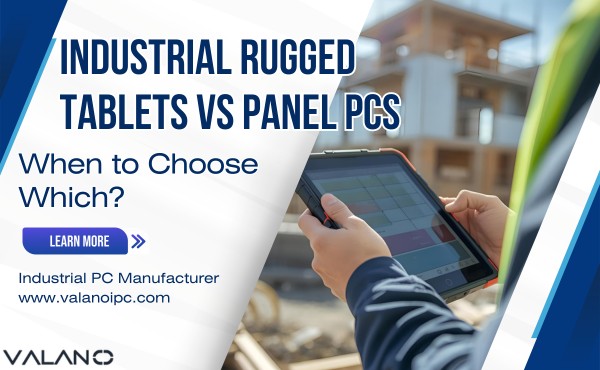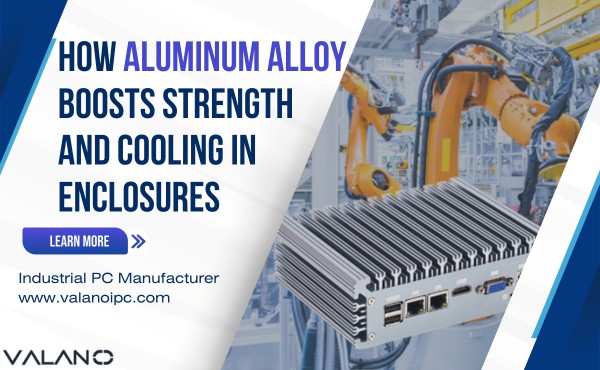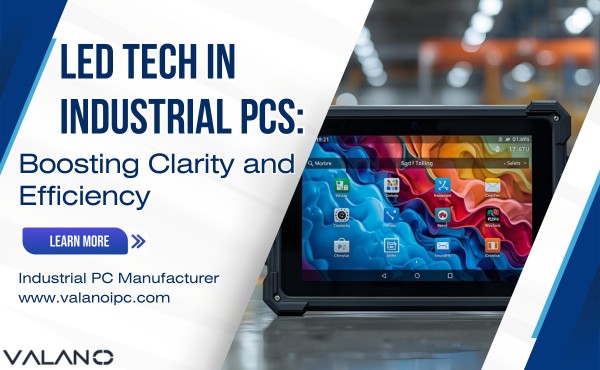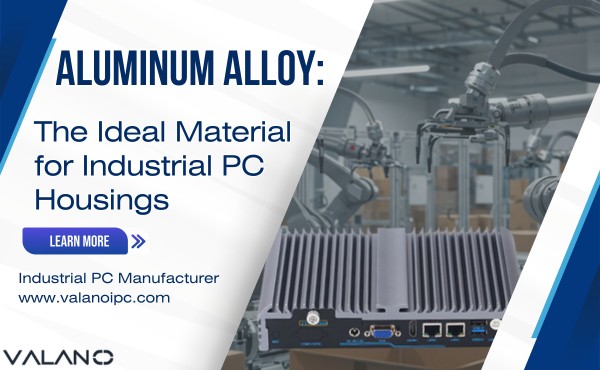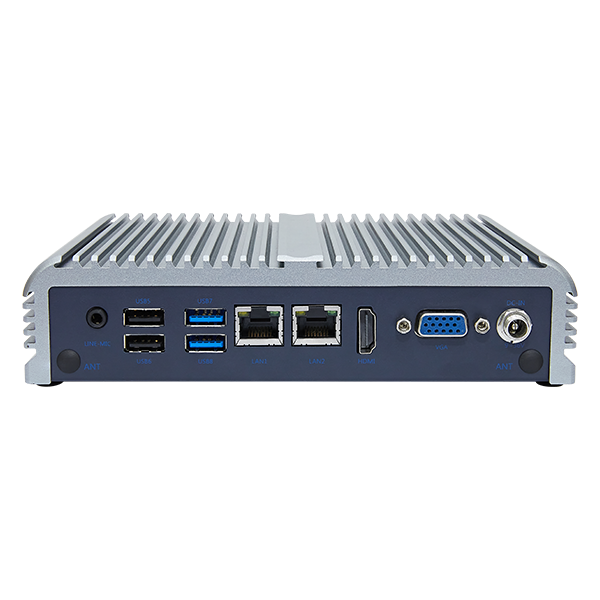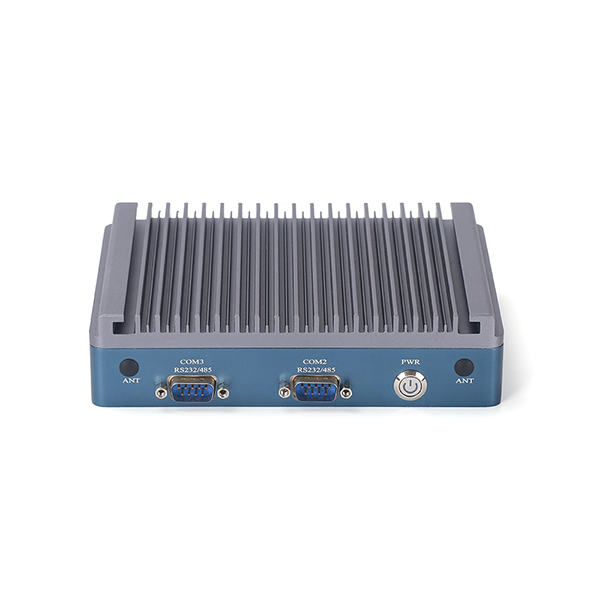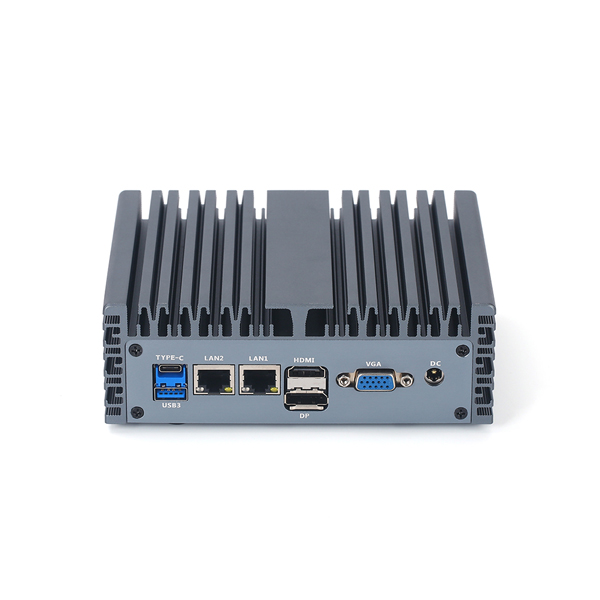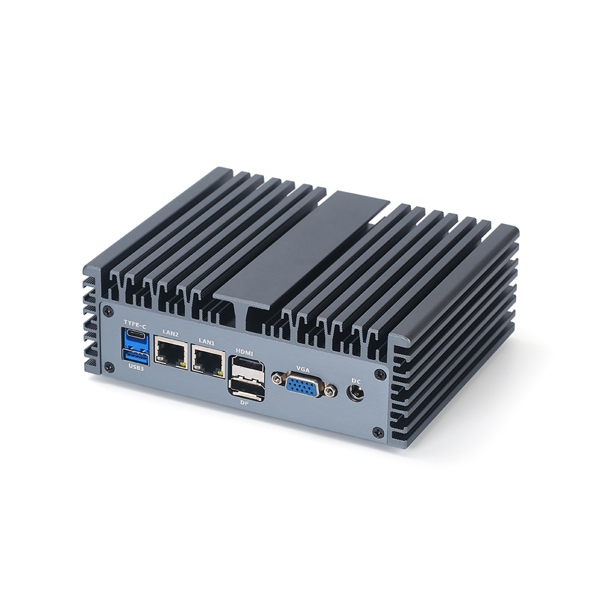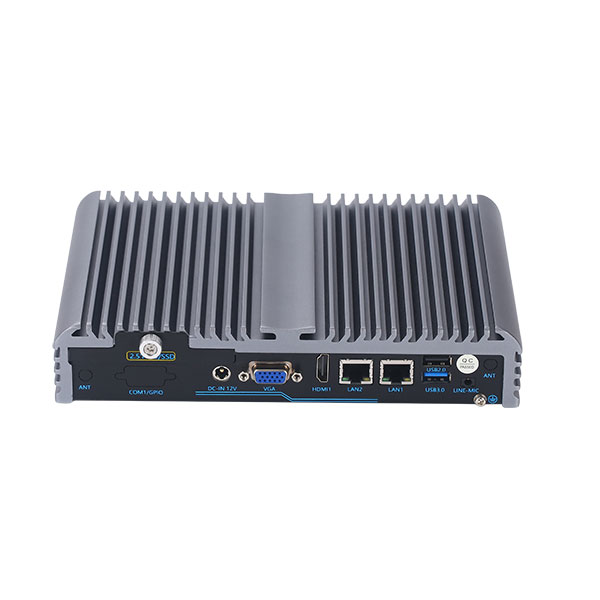In industrial environments, dust, vibration, and extreme temperatures can quickly damage computers with traditional cooling fans. This is where a fanless industrial PC comes in. Designed with passive cooling technology, it operates silently and reliably even in harsh conditions.
In this article, you will learn what a fanless industrial PC is, how it works, and why it is often preferred in manufacturing, automation, and other mission-critical applications. By the end, you’ll have a clear understanding of its key benefits and whether it’s the right choice for your operational needs.
What is an Fanless Industrial PC
A fanless industrial pc uses a sealed design to keep out dust and debris. It relies on passive cooling, which means it has no fans or vents. This type of industrial computer works well in tough environments where heat, vibration, and dirt can damage regular computers.
What Sets It Apart
A fanless industrial pc stands out from traditional computers because it uses a sealed, fanless design. This design keeps out dust, dirt, and moisture. It also prevents small particles from entering the system, which helps the computer last longer in harsh environments.
Most traditional PCs use fans to cool their components. Fans can break down over time and draw in dust. A fanless industrial pc avoids these problems by using passive cooling methods.
The lack of moving parts makes these computers more reliable. They can handle shock, vibration, and extreme temperatures better than regular PCs. This makes them ideal for factories, outdoor locations, and other tough settings.
Key Features
Fanless industrial PCs use rugged materials for their cases. The chassis often acts as a heat sink, pulling heat away from the internal parts. This helps the computer stay cool without needing a fan.
These computers come in several form factors. Common types include panel PCs, rackmount systems, and embedded units. Each type fits different installation needs.
Note: Panel PCs mount directly onto machines or walls. Rackmount systems fit into standard equipment racks. Embedded units install inside other devices or tight spaces.
The sealed design protects the internal electronics from dust, water, and chemicals. This feature allows the computer to work in places where regular PCs would fail. Many models also support wide temperature ranges and can run in both hot and cold environments.
How Fanless Industrial PCs Work
Passive Cooling Technology
A fanless industrial pc uses passive cooling to manage heat. The system relies on heat sinks and a specially designed chassis. The chassis often features fins or ridges that increase surface area and help dissipate heat.
Passive cooling does not use fans or vents. This design keeps dust and debris out of the computer. The heat sinks transfer warmth from the processor and other components to the outer case.
Tip: A larger surface area on the chassis improves cooling efficiency. Engineers often choose aluminum for the case because it conducts heat well.
Passive cooling works best in environments where airflow is limited. The sealed design protects the internal parts from contamination. This approach allows the computer to run reliably in factories, outdoor stations, and other harsh locations.
Rugged Components
Manufacturers build fanless industrial PCs with industrial-grade components. These parts can handle wide temperature ranges and resist shock and vibration. The system uses solid-state drives instead of traditional hard drives to avoid moving parts.
The motherboard and power supply feature reinforced circuits. These circuits protect against electrical surges and unstable power sources. The memory modules also use error-correcting technology to prevent data loss.
| Component | Industrial Feature | Benefit |
|---|---|---|
| Solid-State Drive | No moving parts | Increased durability |
| Reinforced Board | Shock resistance | Reliable performance |
| ECC Memory | Error correction | Data integrity |
A fanless industrial pc can operate in extreme cold or heat. Some models work in temperatures from -20°C to 60°C. This flexibility makes them suitable for remote monitoring, automation, and edge computing.
Fanless Industrial PC Benefits
Reliability and Durability
Industrial computers with fanless designs show strong reliability. They use sealed cases that block dust, moisture, and chemicals. Engineers select rugged materials to protect the internal parts from damage.
These systems operate in places with high vibration and shock. Solid-state drives replace hard drives to remove moving parts. Reinforced boards and error-correcting memory help maintain stable performance.
Note: Many models run in extreme temperatures, from freezing cold to intense heat. This feature allows them to work in outdoor stations, factories, and remote sites.
A table below highlights the durability features:
| Feature | Benefit |
|---|---|
| Sealed Chassis | Blocks dust and liquids |
| Solid-State Storage | Withstands vibration |
| Reinforced Circuits | Resists power surges |
Low Maintenance and Silent Operation
Fanless systems require less maintenance than traditional computers. No fans means fewer parts that can break or wear out. Users spend less time cleaning or replacing components.
These computers run silently. The absence of fans removes noise from the workspace. Silent operation helps in labs, control rooms, and offices where quiet matters.
- Key advantages of low maintenance:
- Fewer breakdowns
- Reduced cleaning needs
- Lower repair costs
Tip: Silent operation improves comfort for workers and reduces distractions.
Many organizations choose fanless designs to save time and money. The systems keep working with little attention, even in tough conditions.
Applications of Fanless Industrial PCs
Industrial Automation
Factories and production lines use computers to control machines and monitor processes. Engineers choose rugged systems for these environments because dust, vibration, and temperature changes can damage regular computers. Fanless designs help keep equipment running without frequent repairs.
Many industrial automation tasks require reliable data collection and fast response times. These computers connect to sensors, motors, and controllers. Operators use them to track production, adjust settings, and detect problems.
Tip: A sealed chassis protects the computer from oil, metal shavings, and chemicals found in manufacturing plants.
Common uses in automation include:
- Machine vision for quality control
- Robotics control and coordination
- Real-time monitoring of assembly lines
A table below shows typical automation tasks and their benefits:
| Task | Benefit |
|---|---|
| Machine Control | Precise operation |
| Data Logging | Improved traceability |
| Fault Detection | Reduced downtime |
Edge Computing and Remote Monitoring
Many industries need computers in remote or outdoor locations. These sites often lack climate control and regular maintenance. Rugged systems work well in these places because they resist dust, moisture, and extreme temperatures.
Edge computing allows data processing close to the source. This reduces delays and improves decision-making. Remote monitoring uses sensors and cameras to track equipment and environmental conditions.
Engineers install these computers at power stations, weather stations, and transportation hubs. They collect data, send alerts, and support automated responses. Silent operation and low maintenance make them ideal for unattended sites.
Note: Wide temperature support lets these systems run in deserts, mountains, and cold storage facilities.
Key applications include:
- Environmental monitoring
- Security surveillance
- Energy management
Choosing a Fanless Industrial PC
Environment and Performance
Selecting the right fanless industrial pc starts with understanding the environment. Temperature, dust, and vibration all affect computer performance. Some locations have extreme heat or cold, while others have high levels of dust or moisture.
A sealed chassis protects against these hazards. Engineers should check the operating temperature range before making a choice. Shock and vibration ratings also matter in places like factories or vehicles.
Performance needs vary by application. Some tasks require fast processors or large amounts of memory. Others need only basic computing power for simple monitoring.
Tip: Always match the computer’s specifications to the demands of the job. Over-specifying can waste money, while under-specifying can cause failures.
Connectivity and Customization
Connectivity options play a key role in industrial settings. Many systems need multiple ports for sensors, cameras, or controllers. Common ports include USB, Ethernet, serial, and digital I/O.
Expansion slots allow for future upgrades. Some users add extra storage, wireless cards, or specialized interfaces. Customization ensures the computer fits unique requirements.
A table below lists important factors to consider:
| Factor | Why It Matters |
|---|---|
| Required Ports | Connects to devices |
| Expansion Slots | Supports future upgrades |
| Mounting Options | Fits installation needs |
Note: Careful planning helps avoid costly changes later. Engineers should review all connectivity and expansion needs before purchase.
Choosing the right fanless industrial pc means balancing environment, performance, and connectivity. A well-matched system will run reliably and support business goals.
Conclusion
A fanless industrial PC uses a heat sink and optimized design to cool components without moving parts, making it more reliable, quieter, and better suited for demanding environments. We’ve covered its definition, working principle, and advantages in industrial use.
If you’re looking for a durable, low-maintenance computing solution for challenging conditions, consider upgrading to a fanless industrial PC. Explore our range today to find the model that matches your requirements.





